The Golden Wonder Killifish is a fascinating fish that has captured the hearts of many aquarium enthusiasts. These beautiful fish belong to the Aplocheilus genus and the Aplocheilidae family. They are closely related to other killifish species, such as the Striped Panchax and the Blue Panchax.
Table of Contents
One of the most interesting things about Golden Wonder Killifish is their ability to jump out of the water to catch insects. They are known for their lively personalities and active swimming habits. These fish are top-dwellers, which means they spend most of their time near the surface of the water.
The scientific name for Golden Wonder Killifish is Aplocheilus lineatus. “Aplocheilus” comes from the Greek words “haplos,” meaning simple, and “cheilos,” meaning lip. “Lineatus” is Latin for lined, referring to the horizontal stripes on the fish’s body.
In the aquarium trade, Golden Wonder Killifish are also known as Striped Panchax, Golden Wonder Panchax, and Malabar Killifish. They are native to the freshwater habitats of India and Sri Lanka, where they can be found in rivers, streams, and ponds.
When it comes to care, Golden Wonder Killifish are relatively easy to maintain. They prefer a well-planted aquarium with plenty of hiding spots and a gentle current. These fish are omnivores and will readily accept a variety of foods, including flakes, pellets, and frozen or live foods like brine shrimp and bloodworms.
Golden Wonder Killifish are generally peaceful and can be kept with other non-aggressive fish of similar size. Some suitable tank mates include other small killifish, rasboras, and tetras. However, it’s essential to keep a tight-fitting lid on the aquarium, as these fish are known for their jumping abilities.
Fun fact: Golden Wonder Killifish are known for their ability to survive in brackish water and can even tolerate full marine conditions for short periods.
In conclusion, Golden Wonder Killifish are a delightful addition to any aquarium. With their vibrant colors, active personalities, and interesting natural behaviors, these fish are sure to bring joy and excitement to any fish enthusiast’s tank.
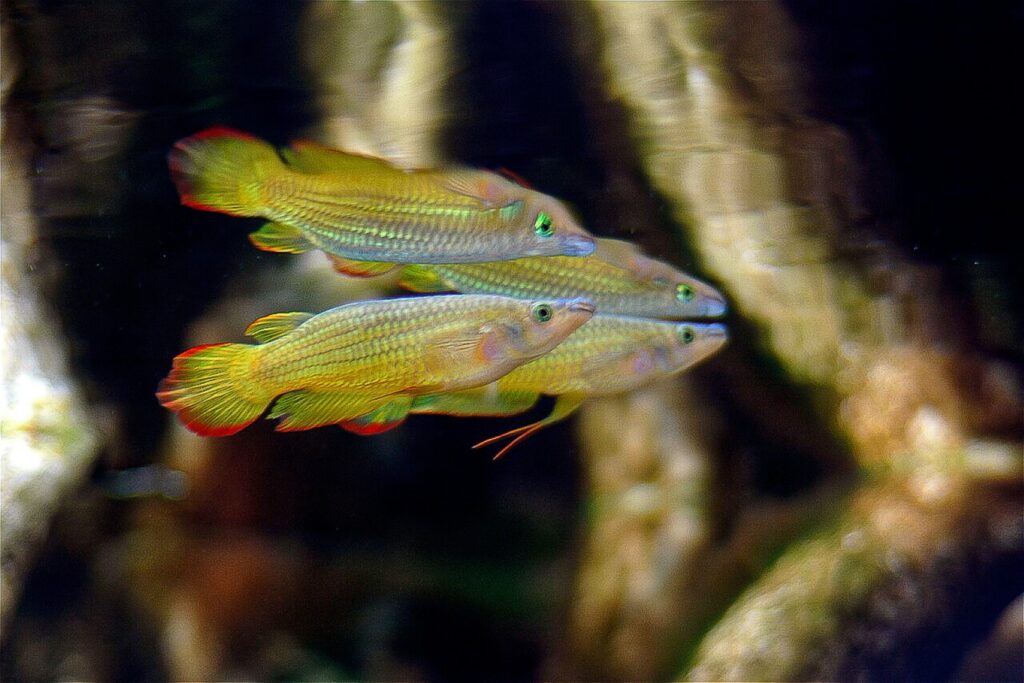
Golden Wonder Killifish Key Information
The Golden Wonder Killifish is a stunning fish that boasts a beautiful golden-yellow body with horizontal black stripes running along its sides. Males are more vibrant in color, with a deeper golden hue and more prominent stripes, while females tend to have a paler appearance. The fins of both sexes are edged in red, adding to their overall attractive appearance.
| Family | Aplocheilidae |
| Origin | India, Sri Lanka |
| Price | $5 to $10 per fish |
| Common Names | Golden Wonder Killifish, Striped Panchax, Golden Wonder Panchax, Malabar Killifish |
| Variants | Golden, Xanthic, Albino |
| Ideal Tank Size | 20 gallons or larger |
| Water Parameters | Temperature: 68-79°F (20-26°C), pH: 6.0-8.0, Hardness: 5-20 dGH |
| Lifespan | 3-5 years |
| Full Size | 3-4 inches (7.5-10 cm) |
| Natural Environment | Rivers, streams, and ponds in India and Sri Lanka |
| Behavior | Active, peaceful, jumps out of water to catch insects |
| Habitat Preference | Top-dwelling, prefers well-planted tanks with gentle current |
| Aquarium Decoration | Plenty of plants, floating plants, and hiding spots |
| Ideal Tank Mates | Other small, peaceful fish like rasboras, tetras, and small killifish |
| Fish to Avoid | Large, aggressive fish that may harass or eat them |
| Best Foods/Diet | Omnivorous; accepts flakes, pellets, frozen, and live foods like brine shrimp and bloodworms |
| Disease | Prone to common fish diseases if water quality is poor |
| Sex-Switch | Does not change sex |
| Gender Differences | Males are more colorful with deeper golden color and prominent stripes; females are paler |
| Care Level | Easy |
| Breeding Level | Moderate; egg-layers that scatter eggs among plants |
Ideal Tank Mates for Golden Wonder Killifish
In order to ensure a harmonious coexistence with Golden Wonder Killifish, it is essential to meticulously select compatible tank mates, taking into consideration their peaceful nature, active swimming behavior, and size. It is ideal to choose companions that share similar water preferences and possess a non-aggressive temperament. In this list, we present ten remarkable tank mates that enhance the beauty of Golden Wonder Killifish, each bringing their own unique qualities and compatibility factors.
Before diving into the list, it’s important to note that while these fish are generally compatible with Golden Wonder Killifish, every aquarium is unique, and individual fish personalities may vary. Always monitor your fish for any signs of aggression or stress and be prepared to make adjustments if necessary.
1. Neon Tetra (Paracheirodon innesi)
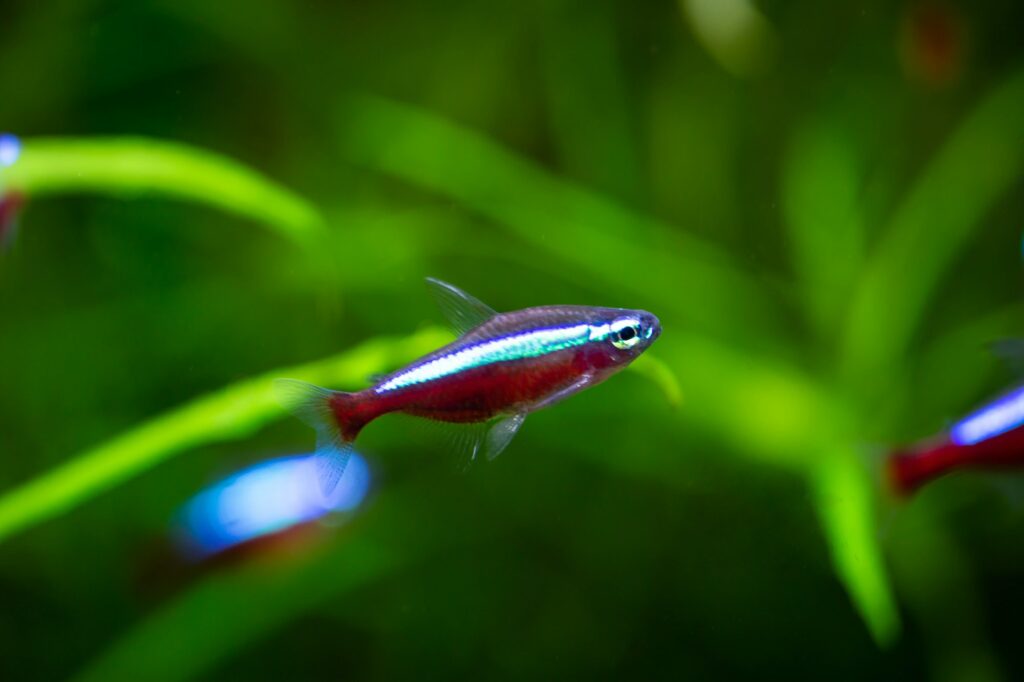
| Common/Market Names | Neon Tetra |
| Price Range | $1-$3 per fish |
| Care Level | Easy |
| Behavior | Peaceful, schooling |
| Life Span | 5-8 years |
| Max Size | 1.5 inches (3.8 cm) |
Neon Tetras are a classic choice for community tanks, and their small size and peaceful nature make them an excellent match for Golden Wonder Killifish. These vibrant fish add a pop of color to the aquarium with their iridescent blue and red stripes. Neon Tetras prefer to be kept in schools of at least six individuals, which creates a stunning visual display as they swim together.
2. Harlequin Rasbora (Trigonostigma heteromorpha)

| Common/Market Names | Harlequin Rasbora |
| Price Range | $2-$4 per fish |
| Care Level | Easy |
| Behavior | Peaceful, schooling |
| Life Span | 5-8 years |
| Max Size | 2 inches (5 cm) |
Harlequin Rasboras are another excellent choice for a Golden Wonder Killifish tank. These small, copper-colored fish with a striking black triangular patch on their sides are both beautiful and peaceful. Like Neon Tetras, Harlequin Rasboras thrive in schools and add a sense of movement and activity to the aquarium.
3. Cherry Barb (Puntius titteya)
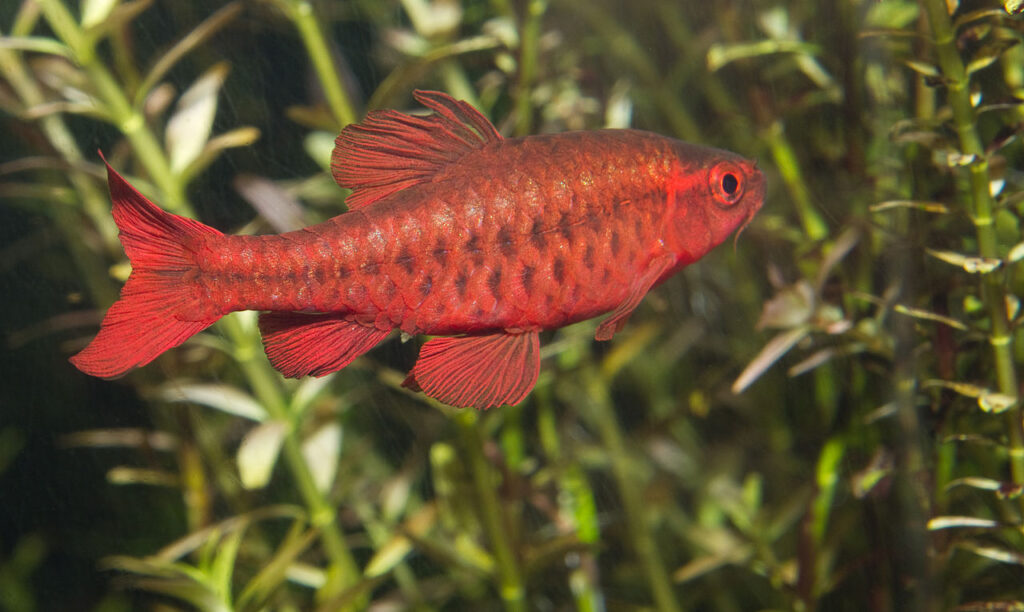
| Common/Market Names | Cherry Barb |
| Price Range | $2-$4 per fish |
| Care Level | Easy |
| Behavior | Peaceful, slightly active |
| Life Span | 4-6 years |
| Max Size | 2 inches (5 cm) |
Cherry Barbs are a colorful and peaceful addition to a Golden Wonder Killifish tank. Males display a vibrant red coloration, while females are more subdued in color. These active fish enjoy swimming in the middle and upper levels of the tank, making them a perfect complement to the top-dwelling Golden Wonder Killifish.
4. Kuhli Loach (Pangio kuhlii)
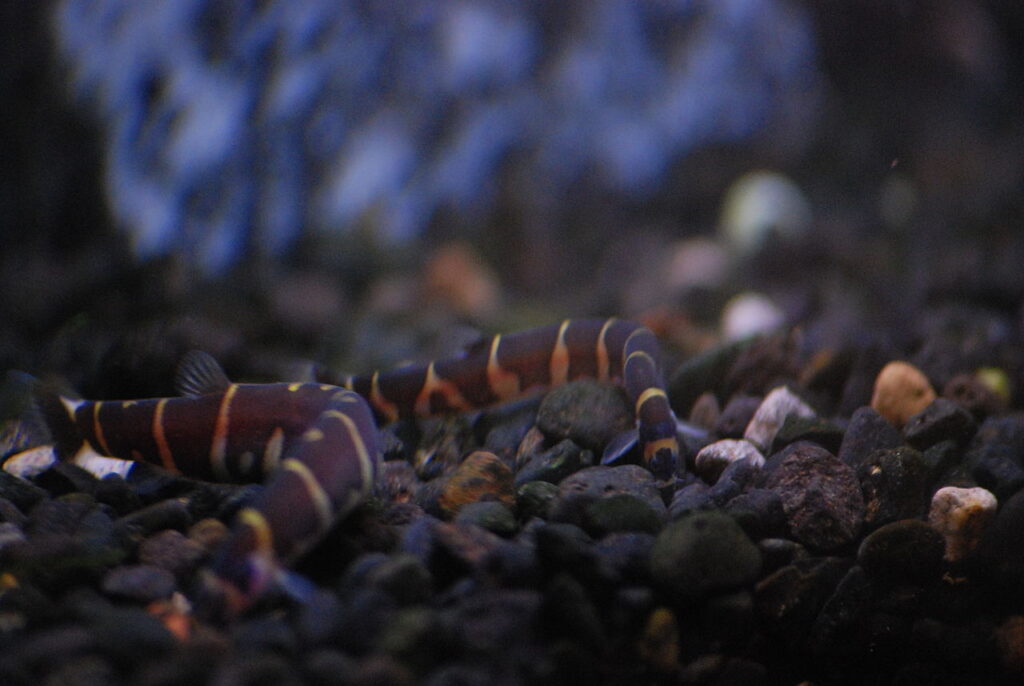
| Common/Market Names | Kuhli Loach, Coolie Loach |
| Price Range | $3-$5 per fish |
| Care Level | Easy |
| Behavior | Peaceful, bottom-dwelling |
| Life Span | 10+ years |
| Max Size | 4 inches (10 cm) |
Kuhli Loaches are an unusual and fascinating addition to a Golden Wonder Killifish tank. These eel-like fish have a peaceful temperament and spend most of their time scavenging for food in the substrate. Their unique appearance and bottom-dwelling habits create an interesting contrast to the active, top-dwelling Golden Wonder Killifish.
5. Pygmy Corydoras (Corydoras pygmaeus)
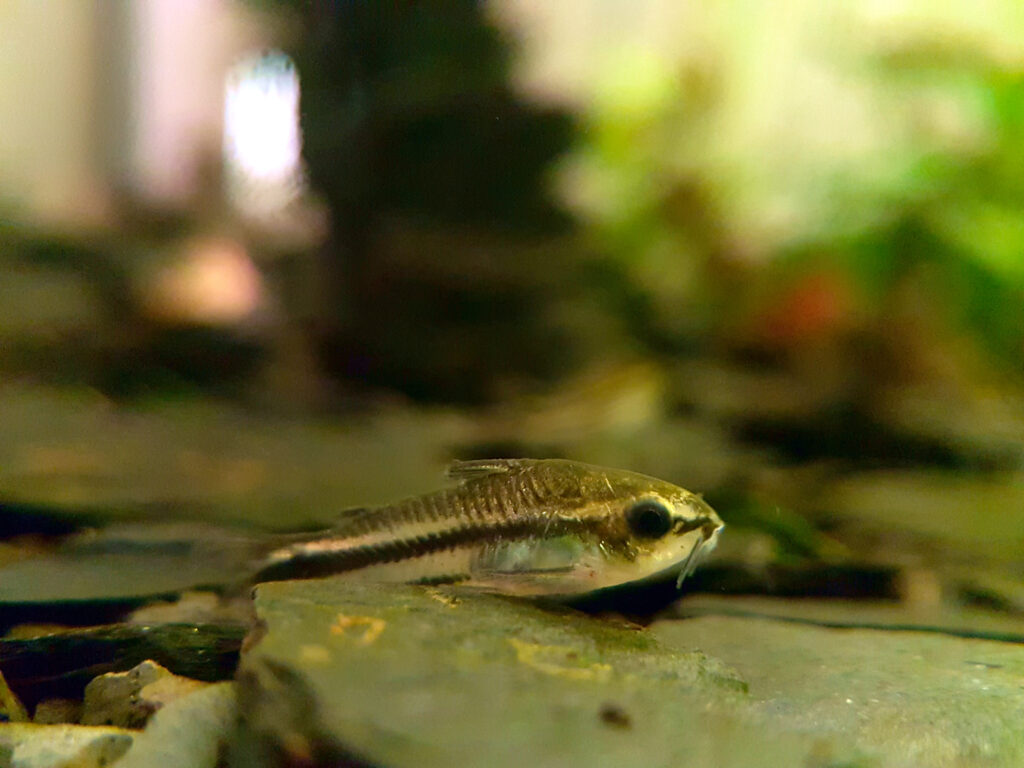
| Common/Market Names | Pygmy Corydoras, Pygmy Cory |
| Price Range | $2-$4 per fish |
| Care Level | Easy |
| Behavior | Peaceful, bottom-dwelling, schooling |
| Life Span | 3-5 years |
| Max Size | 1 inch (2.5 cm) |
Pygmy Corydoras are a miniature version of the popular Corydoras catfish. These tiny, adorable fish are peaceful bottom-dwellers that thrive in schools. Their small size and calm demeanor make them an ideal tank mate for Golden Wonder Killifish, as they occupy a different area of the tank and won’t compete for space or food.
6. Endler’s Livebearer (Poecilia wingei)
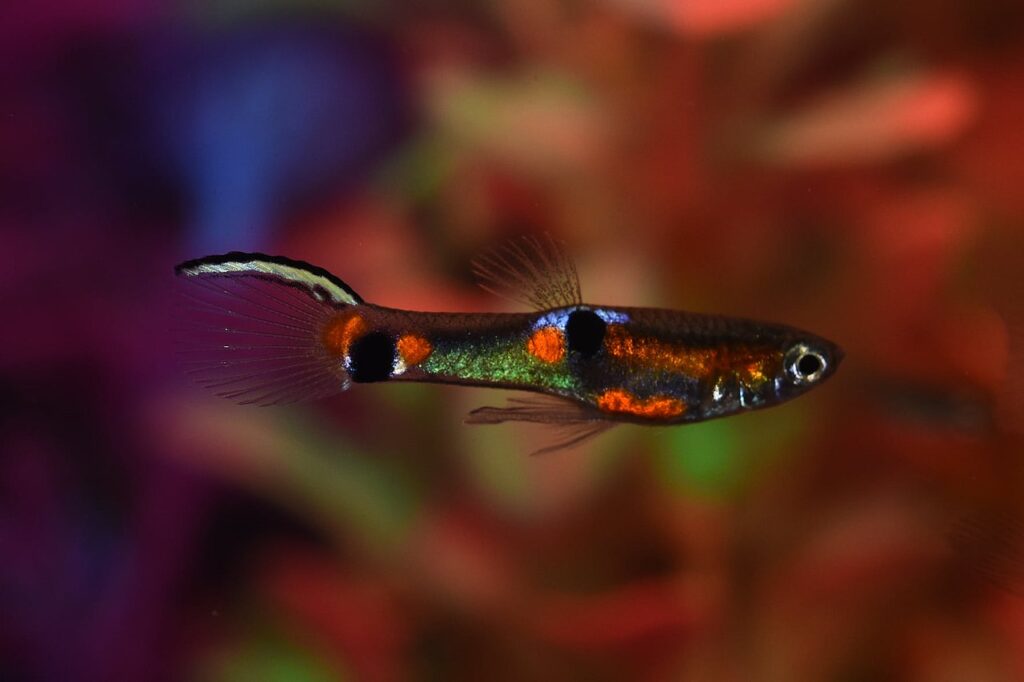
| Common/Market Names | Endler’s Livebearer, Endler’s Guppy |
| Price Range | $3-$6 per fish |
| Care Level | Easy |
| Behavior | Peaceful, active |
| Life Span | 3-5 years |
| Max Size | 1.5 inches (3.8 cm) |
Endler’s Livebearers are a colorful and peaceful fish that can add a splash of color to your Golden Wonder Killifish tank. These small, active fish come in a variety of colors and patterns, making each one unique. Endler’s Livebearers are livebearers, meaning they give birth to live young, which can be an exciting addition to your aquarium.
7. Ember Tetra (Hyphessobrycon amandae)
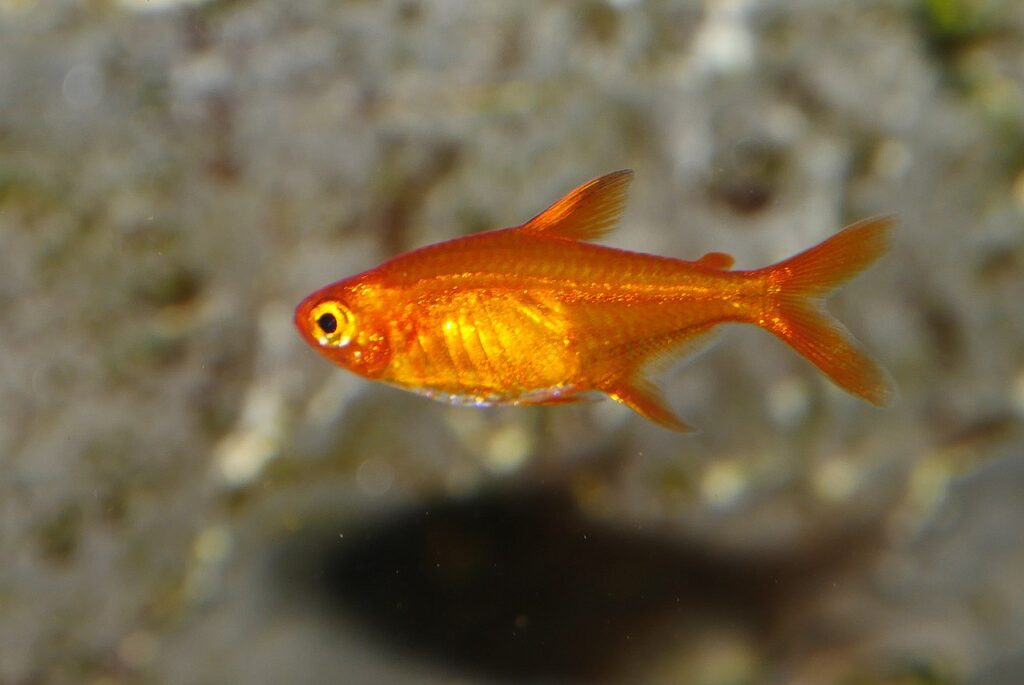
| Common/Market Names | Ember Tetra |
| Price Range | $2-$4 per fish |
| Care Level | Easy |
| Behavior | Peaceful, schooling |
| Life Span | 2-4 years |
| Max Size | 0.8 inches (2 cm) |
Ember Tetras are a small, peaceful fish with a striking orange-red coloration that looks like a glowing ember. These tiny fish are perfect for smaller aquariums and enjoy the company of their own kind, so be sure to keep them in schools of at least six individuals. Their peaceful nature and small size make them an excellent companion for Golden Wonder Killifish.
8. Otocinclus Catfish (Otocinclus spp.)
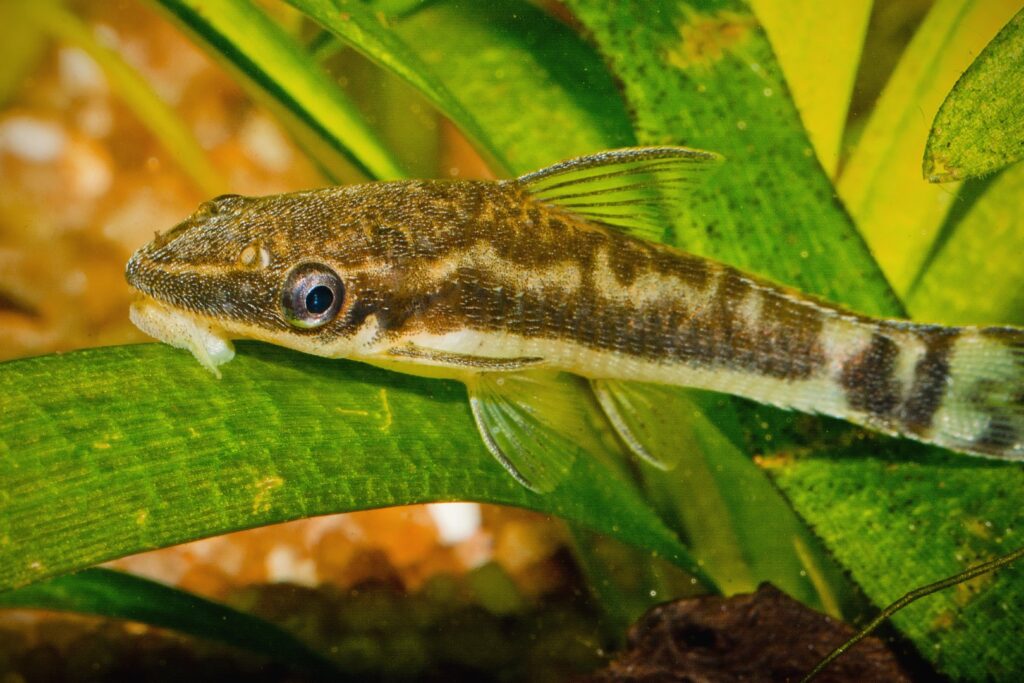
| Common/Market Names | Otocinclus Catfish, Oto, Dwarf Sucker Fish |
| Price Range | $2-$4 per fish |
| Care Level | Moderate |
| Behavior | Peaceful, bottom-dwelling |
| Life Span | 3-5 years |
| Max Size | 2 inches (5 cm) |
Otocinclus Catfish are small, algae-eating fish that can help keep your aquarium clean. These peaceful bottom-dwellers are known for their industrious nature and can often be seen grazing on algae throughout the day. While they are peaceful, they can be sensitive to changes in water parameters, so be sure to maintain a stable environment.
9. Celestial Pearl Danio (Danio margaritatus)
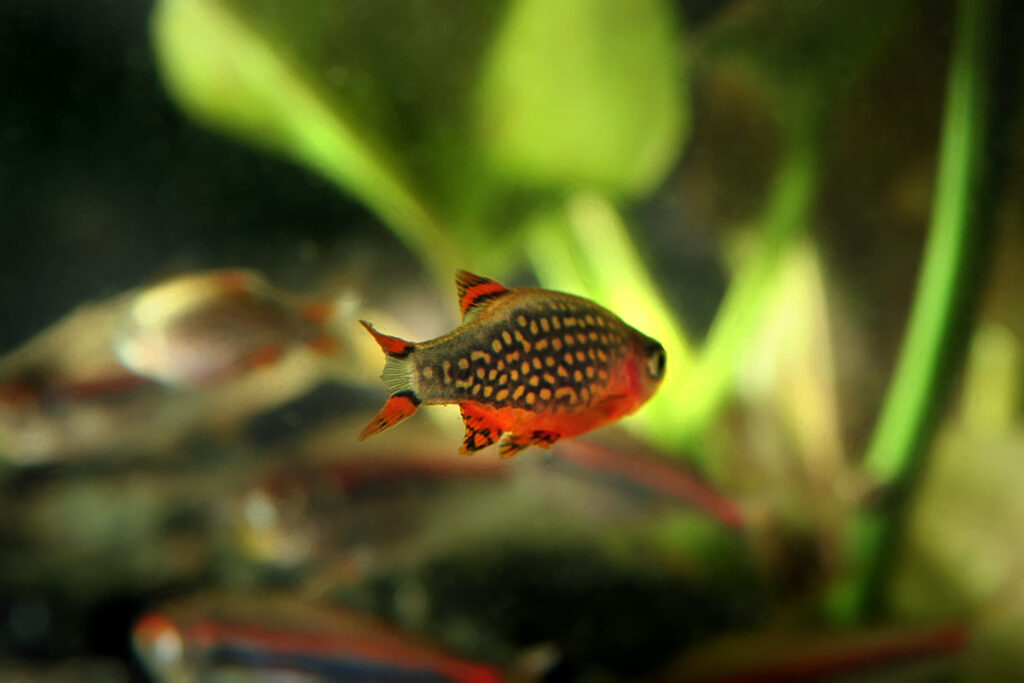
| Common/Market Names | Celestial Pearl Danio, Galaxy Rasbora |
| Price Range | $4-$7 per fish |
| Care Level | Moderate |
| Behavior | Peaceful, schooling |
| Life Span | 3-5 years |
| Max Size | 1 inch (2.5 cm) |
Celestial Pearl Danios are a stunning fish with a galactic pattern of spots on their bodies, reminiscent of a starry night sky. These small, peaceful fish are a perfect addition to a Golden Wonder Killifish tank, as they occupy the middle and lower levels of the aquarium. Keep them in schools of at least six to ensure they feel secure and display their best colors.
10. Dwarf Gourami (Trichogaster lalius)
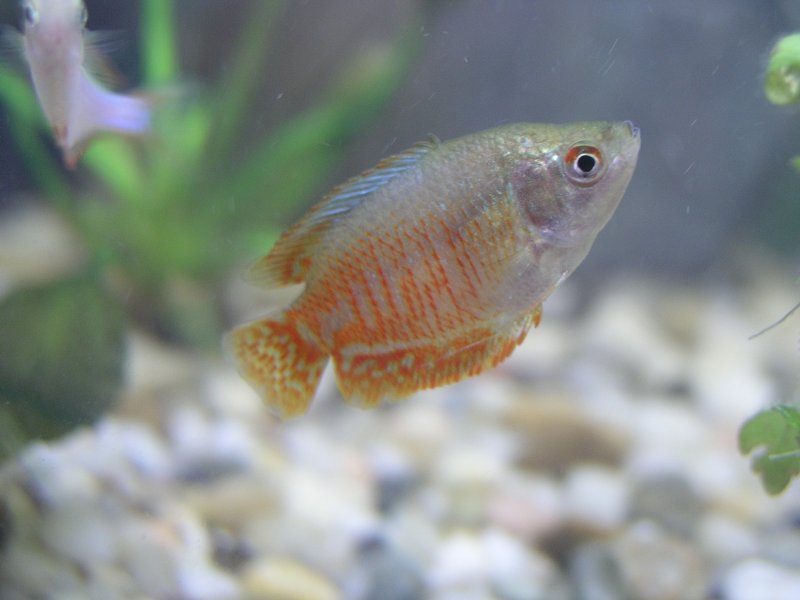
| Common/Market Names | Dwarf Gourami, Flame Dwarf Gourami, Powder Blue Dwarf Gourami |
| Price Range | $4-$8 per fish |
| Care Level | Easy |
| Behavior | Peaceful, can be territorial |
| Life Span | 4-6 years |
| Max Size | 3.5 inches (9 cm) |
Dwarf Gouramis are a colorful and peaceful addition to a Golden Wonder Killifish tank. These fish come in a variety of colors, including flame red and powder blue. While generally peaceful, males can be territorial towards each other, so it’s best to keep only one male per tank. Dwarf Gouramis occupy the middle and top levels of the aquarium, making them a good companion for Golden Wonder Killifish.
FAQs about Golden Wonder Killifish
What is the ideal water temperature for Golden Wonder Killifish?
Golden Wonder Killifish prefer water temperatures between 68-79°F (20-26°C). Maintaining a stable temperature within this range is essential for their health and well-being.
How often should I feed my Golden Wonder Killifish?
Feed your Golden Wonder Killifish small amounts of food 2-3 times a day. Offer a variety of high-quality flakes, pellets, and frozen or live foods to ensure a balanced diet.
Do Golden Wonder Killifish jump out of the aquarium?
Yes, Golden Wonder Killifish are known for their jumping abilities. It’s crucial to keep a tight-fitting lid on your aquarium to prevent them from jumping out and injuring themselves.
How many Golden Wonder Killifish should I keep in my aquarium?
Golden Wonder Killifish can be kept in pairs or small groups. A 20-gallon aquarium can comfortably house 4-6 individuals, depending on the presence of other tank mates.
Are Golden Wonder Killifish suitable for planted aquariums?
Yes, Golden Wonder Killifish are an excellent choice for planted aquariums. They enjoy well-planted tanks with plenty of hiding spots and will not damage the plants.
How can I tell the difference between male and female Golden Wonder Killifish?
Male Golden Wonder Killifish are more vibrant in color, with a deeper golden hue and more prominent black stripes. Females tend to have a paler appearance and are slightly larger than males.
Can Golden Wonder Killifish be kept with shrimp?
It is not recommended to keep Golden Wonder Killifish with small shrimp, as they may view them as food. However, larger shrimp species like Amano Shrimp or Bamboo Shrimp can be suitable tank mates.
How often should I perform water changes for my Golden Wonder Killifish tank?
Perform weekly water changes of 10-20% to maintain good water quality. Use a gravel vacuum to remove debris and waste from the substrate during water changes.
Are Golden Wonder Killifish sensitive to changes in water parameters?
While Golden Wonder Killifish are relatively hardy, they can be sensitive to sudden changes in water parameters. Always acclimate them slowly to new tank conditions and avoid drastic changes in temperature, pH, or hardness.
Can I breed Golden Wonder Killifish in my home aquarium?
Yes, breeding Golden Wonder Killifish is possible in a home aquarium. They are egg scatterers and will lay their eggs among fine-leaved plants. Provide plenty of dense vegetation and remove the adult fish once spawning is complete to prevent them from eating the eggs.